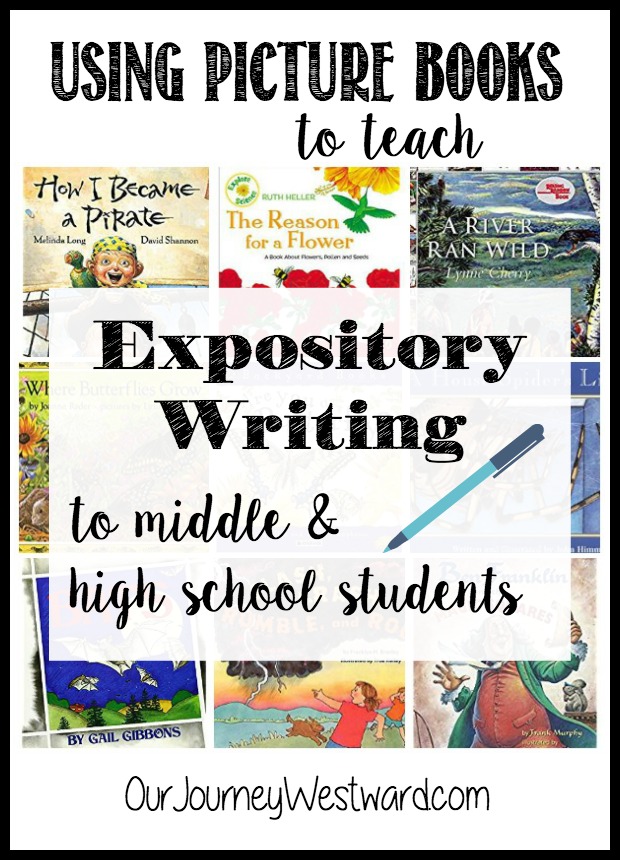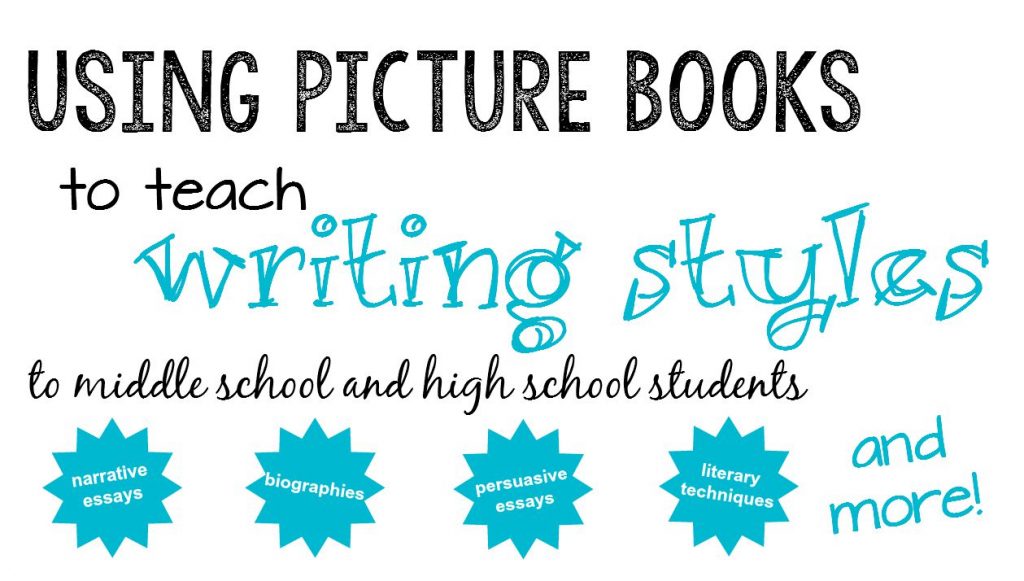Using Picture Books to Teach Expository Writing
Why would anyone use picture books to teach expository writing? Because picture books are written by master authors who can teach us clearly through their examples. Not to mention, it doesn’t take long to read through most picture books, so you can share examples and get right to the work of writing.

What is expository writing?
Expository writing is a fancy name for writing that conveys information or ideas and offers explanations or evidence to back up said information or ideas. Informational children’s books, textbooks, autobiographies, magazine articles, and newspaper articles are all examples of expository writing.
This post contains affiliate links.
That sounds boring!
Since expository writing is informative and aims to impart facts, this isn’t the place for personal opinions. That doesn’t mean, however, that it has to be boring. There is still much room for creativity, which should catch the reader’s attention! There’s even a bit of room for humor if you see fit. (The Fallacy Detective is a good example of humorous expository writing.)
Lay it all out there.
The writer of an expository essay must assume the reader has no prior knowledge of the subject. This way, the essay provides all the necessary information for a complete understanding of the topic.
How To Teach Expository Writing
When preparing for an expository piece, I ask my homeschool students to make a list of questions someone might ask about the topic. We then order the questions sequentially, asking, “Which questions make sense to answer first?” These questions become the basic outline of the piece. All we have to do then is begin writing so that the questions are answered without the reader ever having to ask.
Of course, questions will be rearranged here and there. New questions might also need to be answered as the writing begins or during the editing process.
Note that expository writing is a little different from expository essay writing. They certainly have many similarities, but I’m not proposing the typical five-paragraph essay structure here. It’s still essential to have a thesis – the main idea everything else supports. But that thesis shouldn’t be as formal as the five-paragraph essay. It’s also essential to support your thesis with evidence, but not necessarily in a formal format. I also don’t feel it’s imperative to round out the writing with a conclusion that revisits the thesis unless it works with your creative piece.
How The Pros Do It
To help my middle and high school students understand what I mean by creative expository writing, I often share several of the following books with them.
The Reason for a Flower by Ruth Heller
Where Butterflies Grow by Joanne Ryder
How I Became a Pirate by David Shannon
A Place for Butterflies by Melissa Stewart
A River Ran Wild by Lynne Cherry
A House Spider’s Life by John Himmelman
Are You a Butterfly? by Judy Allen
Flash, Crash, Rumble, Roll by Franklyn M. Branley
Ben Franklin and the Magic Squares by Frank Murphy
Pirates: Raiders of the High Seas by Christopher Maynard
Bats by Gail Gibbons
Several of these authors have written other books that would be quite suitable. You’re looking for any book that shares information about a topic without being too “textbook-like.”
Types of Expository Writing
After using the picture books and method mentioned above to write stories and/or informational text, we often take time to tackle very specific forms of expository writing.
- Advertisements
- Book jackets
- Book reviews (or reviews of any product, movie, etc.)
- Brochures
- Editorials
- Handbooks
- Interviews
- Job descriptions
- Newspaper articles
- Tributes
I challenge the students to use creativity in these assignments, too! (By the way, each of these is an excellent assignment for project-based learning!)
Do you need a little more help in teaching with this method?
I taught a practical class that can help!
Want more?
I have written several other posts about using picture books to teach writing styles to middle and high school students. Learn how to teach narratives, persuasive essays, biographies, text structure, and literary techniques – all using mentor texts from master authors!
You Might Also Like:
















I love reading this series. I teach writing at our co-op and these are great ideas I can use with our group!
Rachel, I hope your students enjoy the lessons! Oh, and I hope their writing improves, too. 🙂 LOL
Do you have a top 3 for these books as well?!
I have to order them (live in the middle East), so I have to be selective :).
Thanks!
Tisza, for these I would suggest whichever topics seem to motivate your children the most. The books are equally good. In fact, for those that are leveled readers (Eyewitness, Step Into Reading, etc.) you could even choose other books from the same series if you find topics of more interest to your children.